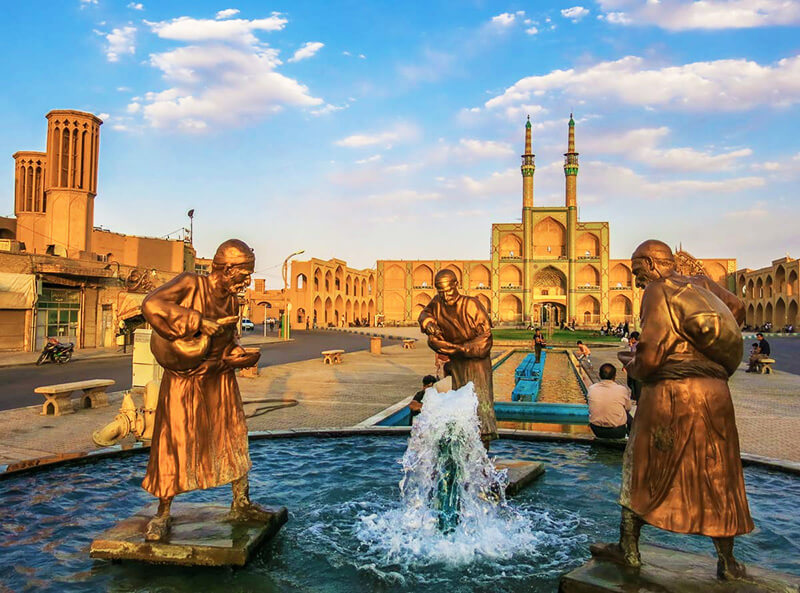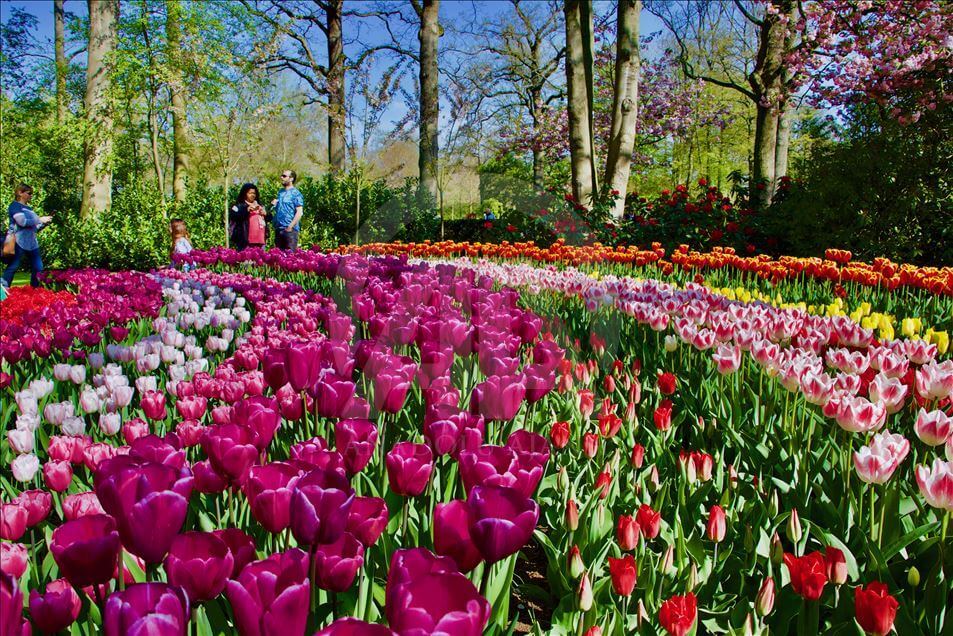
Welcome to Min-On’s Music Journey! Today, the Min-On Concert Association and the Embassy of the Islamic Republic of Iran in Japan welcome you to Iran, a Middle Eastern country bordering the Caspian Sea in the north and the Persian Gulf in the south.
Iran’s land area is 80% arid, with a large desert on the east side of the country. However, because over half of the country is mountainous and over 300 meters above sea level, the inland areas have four distinct seasons. Iran is well known for how greatly its natural environment differs by region.

| Travel guide for Iran:
・Take a beautiful photo tour of the Iranian mountains and gulf coast areas |
The beautiful landscapes of the mountains in northern Iran and the Persian Gulf area, which is a popular winter resort destination, feel completely different from Iran’s arid desert region.

The capital of Tehran, the City of Flowers
Tehran lies at the foot of the Alborz Mountains and its population of over 14 million makes it one of the largest cities in the Middle East. Tehran is the cultural, financial and commercial heart of Iran. The city has many memorable locations to visit, including the 435-meter-tall Milad Tower and the Carpet Museum of Iran, which houses a collection of Persian rugs, a major local industry.

Tehran is also home to the largest bazaar in the Middle East, the Grand Bazaar. It’s worth a visit for its sheer size and scale of goods on offer. Anything can be purchased here, from food and daily necessities to gold and silver jewelry.

Tehran is also called the “City of Flowers” thanks to fragrant flowers of many colors blooming across the city. There are many different locations visitors can enjoy seeing beautiful local flowers, starting with the Iranian-style gardens blanketed in tulips and the Golestan Palace, a World Heritage Site meaning “Rose Garden Palace.”


Gracious, cheerful national character
Many visitors to Iran can’t help saying, “I got such a different impression than what I expected!” Let’s take a look at a few examples of Iranian national character.

Taarof, consideration for others
The word taarof represents the local customs of courtesy, deference and consideration for others. Because these customs are based on ideas of good manners, like letting someone go ahead of you, there is often a lot of back and forth as everyone tries to insist on treating others as well as possible. As a result, the locals often tell jokes like, “The day’s going to end before they finally decide who goes first!”

A picnic basket in every car
The Iranian people are also known for their love of picnics. It’s common to find a picnic basket in the trunk of nearly every car, and some families even keep their trunk fully stocked with camping gear.
The locals enjoy picnicking not just at parks and beaches, but also throughout the city. The sight of people picnicking wherever they please among beautiful landscapes and flowers across the city is one of Tehran’s unique charms.

Cultural exchange via the Silk Road
Iran flourished as a major hub of trade along the Silk Road. As a result, Iran has a long history of cultural exchange with Asia and Europe, and has also established a relationship with Japan.

The Shosoin Repository in Nara has some vessels in its collection believed to have come from Sasanian Persia about 1,500 years ago, suggesting that Iran had a special connection with Japan long ago. Modern Iranian people also have a love of Japanese culture. For example, the Japanese TV drama “Oshin” received viewer ratings as high as 90%.
Please enjoy Ringo Oiwake (Theme Song from NHK’s “Oshin”) performed at the Golnar & Mahan LIVE 2018 concert hosted in 2018 by the Austrian Embassy’s Public Information and Culture Center and Min-On Concert Association. *Min-On Music Journey No. 27: Austria
Iranian music and art culture
Many artistic cultural traditions have blossomed in Iran over its long history. On today’s journey, we will focus on poetry and music.
The birthplace of four of Persia’s greatest poets
Iran is a land of poetry and has seen the rise of many great poets. The local people have memorized many lines from famous poems and often use them naturally in daily conversation.
One of the four great poets of Persia, Hafez (1326–1390), is considered by many to be the king of lyrical poetry. It’s said that every Iranian household has at least one volume of his poems.

The oldest music culture in the world
Iran has a particularly long musical history, and the Min-On Music Museum has a large number of Iranian traditional instruments in its collection.

| Anbor | A khakkara percussion instrument, a metal rod decorated with metal rings that is shaken to create sound |
| Hopus | A beautifully decorated eight-string lute |
| Daf | A large tambourine with a deer hide drumhead |
| Balaban | A woodwind instrument with two very long reeds |
Min-On has enjoyed taking part in many cultural exchange events with Iran. Below, please enjoy listening to a piece based on one of Hafez’s poems called “Come, Scatter the Roses.” This piece was performed by the Iranian Traditional Music Ensemble at the Asian Peace and Arts Festival concert hosted by Min-On in 2001.
Come, Scatter the Roses
The influence of traditional Iranian music can still be clearly seen in modern Iranian music. New attempts to combine it with a variety of genres, such as fusing traditional music with flamenco, or mixing classical and pop music, are popular among young Iranian musicians.
Musicians recommended by the Embassy of the Islamic Republic of Iran in Japan
In closing, we would like to introduce musicians recommended by the Embassy of the Islamic Republic of Iran in Japan.
1. Daryaei -Mohsen Sharifian & Lian Music Band
2. Hele Mali (Iranian Folk Song from Bushehr) - Rastak
3. Dastam Ra Begir - Mohammad Motamedi
What did you think of your music journey to Iran? There are still many more places to go! Please look forward to our next destination.

(Produced in collaboration with the Embassy of the Islamic Republic of Iran in Japan, who also provided photos.)
Min-On Concert Association
-Music Binds Our Hearts-



